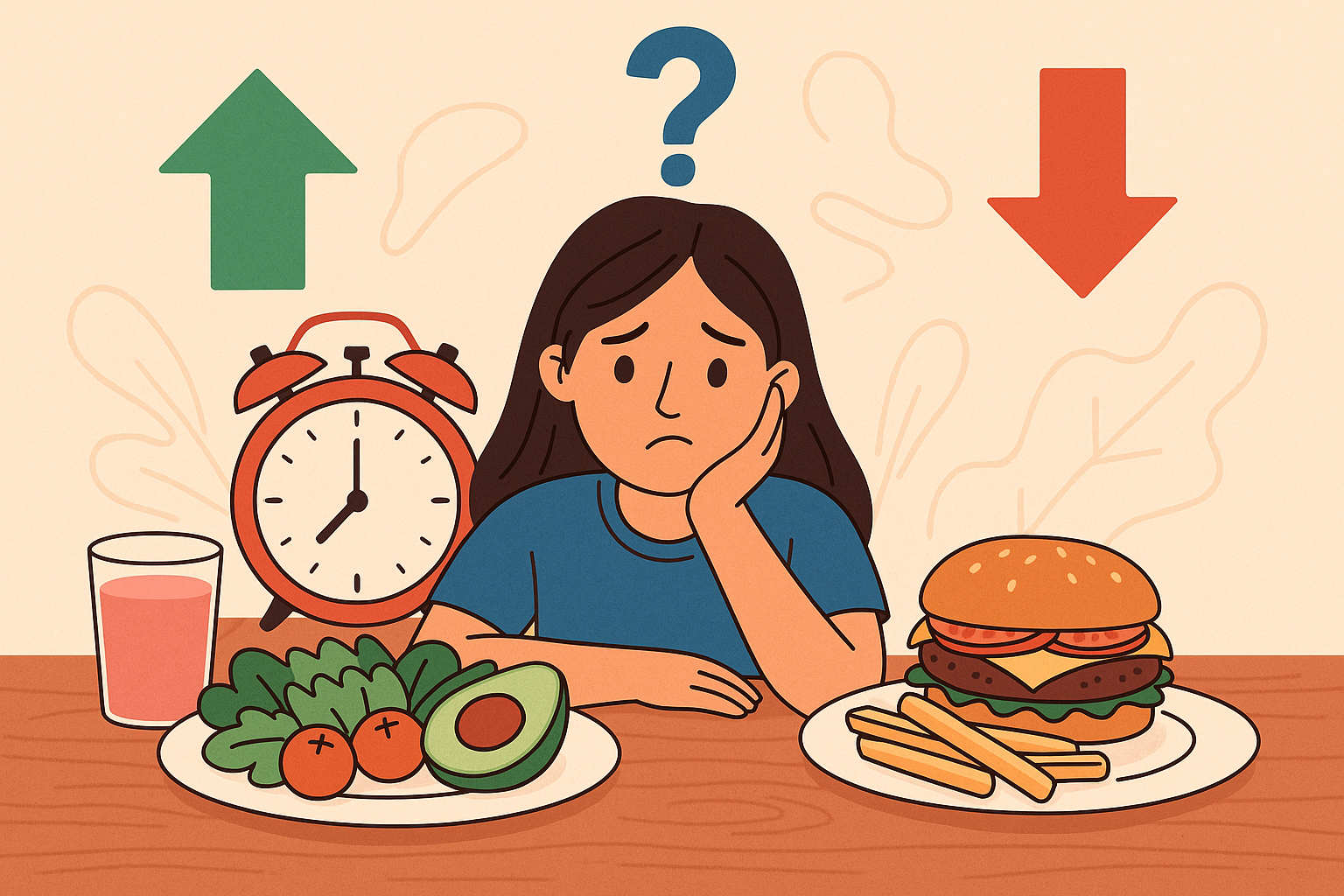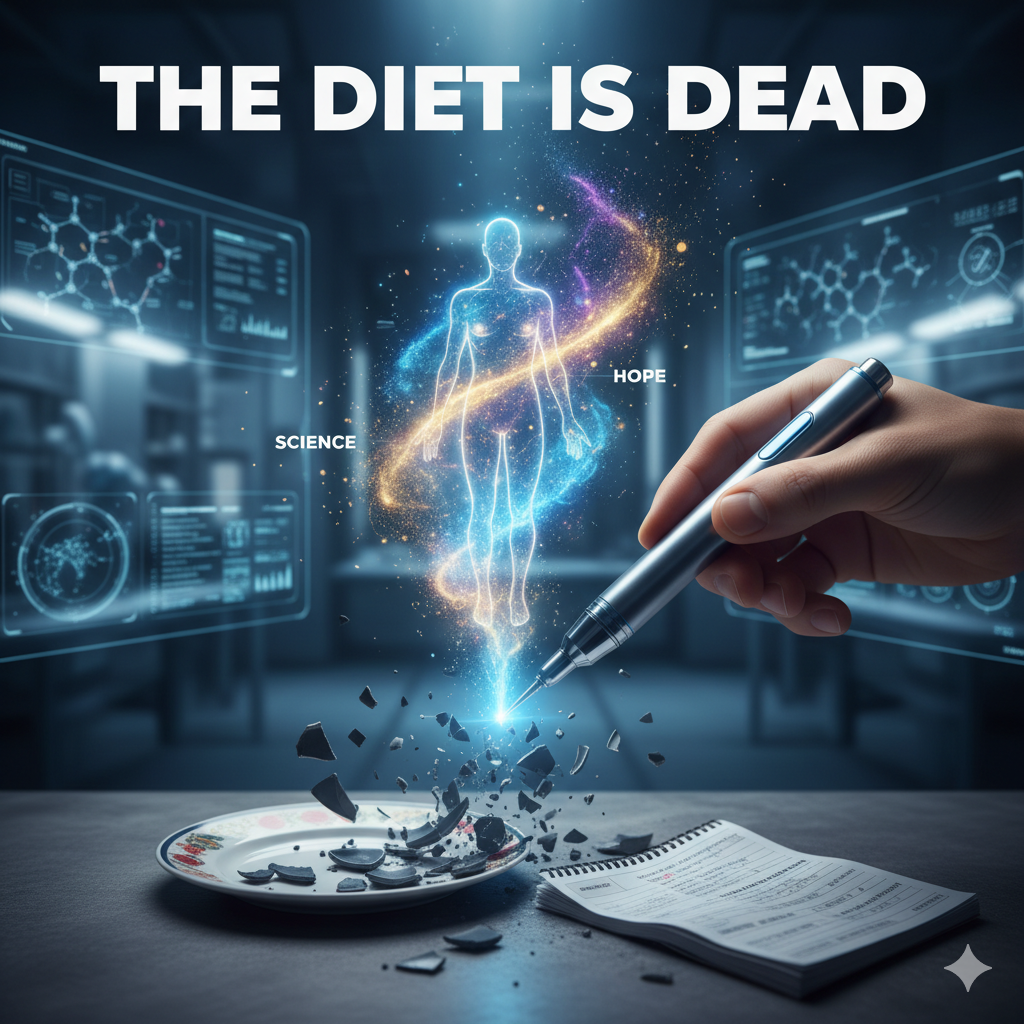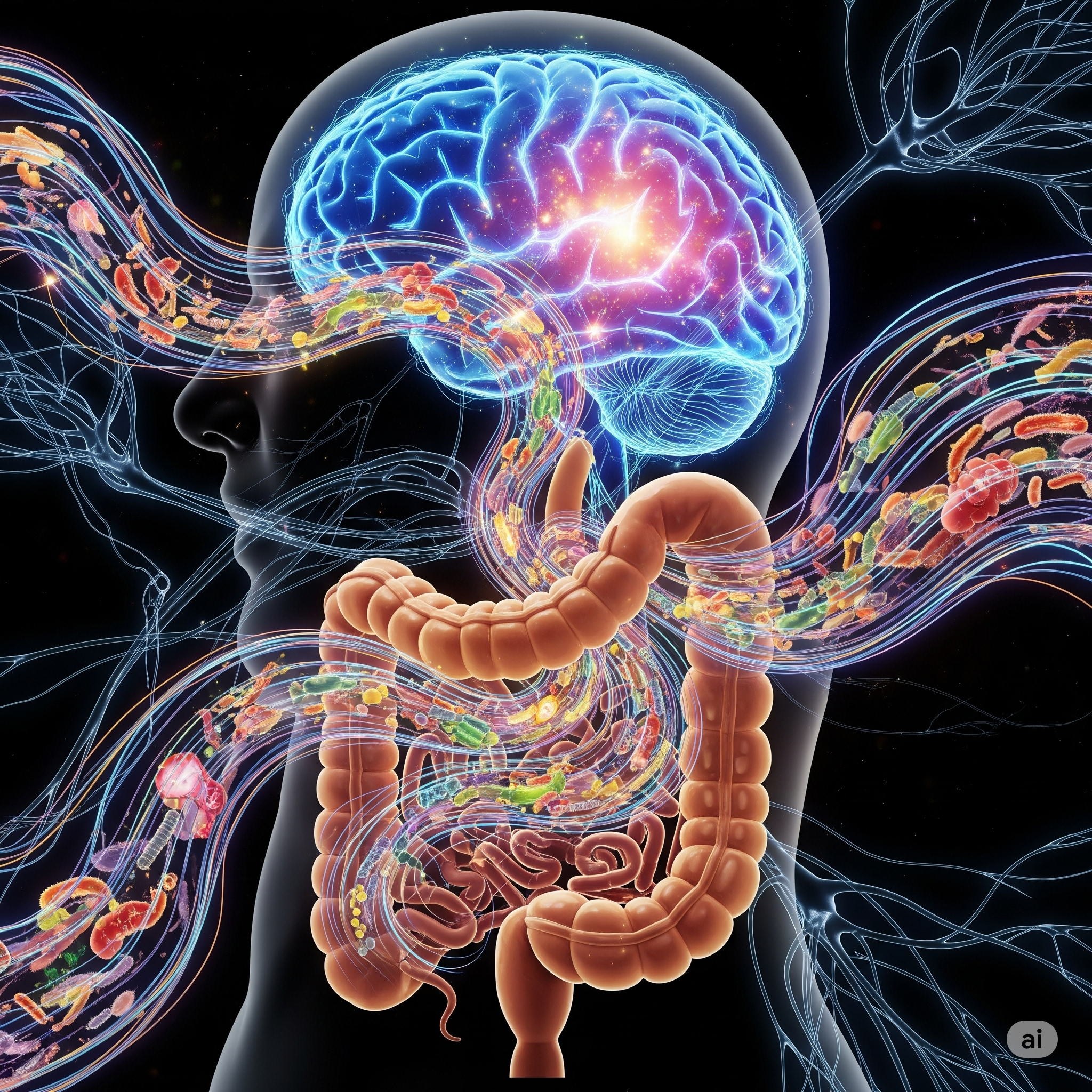Rethinking the Small Meals vs. Big Meals Debate
Introduction:
If you’ve ever Googled “how to lose weight” or “what’s the healthiest way to eat,” you’ve probably stumbled across the age-old debate:
Is it better to eat three big meals a day or several small ones?
Some experts say eating every 2–3 hours “keeps your metabolism running.” Others claim that frequent snacking leads to weight gain and insulin resistance. Social media adds fuel to the fire, with fitness influencers promoting six-meal-a-day “clean eating,” while intermittent fasting enthusiasts swear by just one or two meals daily.
So what’s the truth? Does snacking sabotage your health goals, or could it actually help?
In this article, we’ll dive into the science behind meal frequency, metabolism, blood sugar, and hunger. We’ll explore who might benefit from snacking—and who should probably skip it. You don’t need a nutrition degree to understand it, but by the end, you’ll know how to make smarter choices that actually work for your body and lifestyle.
1. What Is Snacking, Really?
Let’s start with the basics.
A “snack” is any food or drink consumed between main meals. It might be a handful of almonds, a protein bar, a piece of fruit, or a sugary soda with chips. Not all snacks are created equal—and that matters a lot.
In different cultures, snacking habits vary widely. In the U.S., for example, over 90% of adults report consuming at least one snack daily, often more. In Mediterranean countries, meals tend to be larger and more structured, with less emphasis on in-between eating.
But the real question isn’t just how often we eat—it’s what, why, and how much we eat.
2. The Metabolism Myth: Does Eating Frequently Boost Your Metabolic Rate?
One of the most common claims in favor of snacking is this:
“Eating small meals throughout the day boosts your metabolism.”
But science says… not exactly.
Your body burns energy through something called the thermic effect of food (TEF)—the calories you burn digesting what you eat. TEF accounts for about 10% of your daily energy expenditure. However, TEF depends on how much you eat, not how often.
Eating six 300-calorie meals produces the same TEF as eating three 600-calorie meals. It’s the total number of calories that matters—not the frequency.
According to a 2017 review published in the journal Nutrition Reviews, meal frequency has no significant impact on resting metabolic rate in most people. In other words: snacking doesn’t speed up your metabolism—but it doesn’t necessarily slow it down either.
3. Blood Sugar and Energy: Do Smaller Meals Keep You Stable?
One of the strongest arguments for eating smaller, more frequent meals is blood sugar control—especially for people with diabetes or insulin resistance.
The logic is simple: eating regularly prevents blood sugar from dropping too low (hypoglycemia) or spiking too high (hyperglycemia). But again, context matters.
A 2014 study published in Diabetologia compared eating six small meals versus two larger ones in individuals with type 2 diabetes. Surprisingly, two larger meals led to better blood glucose control and greater fat loss over a 12-week period.
Why? Larger, balanced meals seem to create a stronger insulin response and longer-lasting satiety. Smaller meals, especially if they are carbohydrate-heavy or low in fiber, may cause frequent blood sugar fluctuations.
💡 Bottom Line: Snacking can help maintain energy levels—but only if snacks are low in added sugar and contain protein or fiber.
4. Hunger and Appetite Control: Friend or Foe?
Let’s talk about appetite.
Does eating more often help control hunger—or just make you think about food more?
The answer: it depends on your personality, habits, and food choices.
✅ Potential benefits of snacking:
- Prevents extreme hunger that leads to overeating
- Provides energy during long workdays or before/after workouts
- Can help regulate mood and concentration
❌ Potential downsides:
- Constant eating can disconnect you from hunger signals
- Grazing all day can lead to overeating without noticing
- Many snack foods are high in calories, low in nutrition
A 2020 study from Appetite journal found that mindful eaters—those who pay attention to when and why they eat—benefited more from small, regular meals than distracted eaters. It’s not just how often you eat—but how aware you are of each bite.
5. Snacking and Weight: Help or Hindrance?
When it comes to weight management, meal frequency remains a controversial topic.
A 2015 randomized controlled trial published in Obesity found no difference in weight loss between participants eating three meals per day versus six meals—when total calories were equal. What mattered most was caloric intake and food quality, not meal frequency.
However, snacking becomes problematic when:
- Calories aren’t tracked or balanced
- Snacking replaces proper meals
- Snacks are mostly processed foods (chips, sweets, sugary drinks)
Mindless snacking while working, driving, or watching TV can easily add 300–500 extra calories a day, which over time, may lead to weight gain.
6. Circadian Rhythm and Meal Timing
Did you know when you eat may matter just as much as what you eat?
Your body follows a circadian rhythm—a natural 24-hour clock that regulates digestion, metabolism, and hormone release. Studies show that eating late at night (especially high-fat or sugary snacks) may disrupt sleep, raise blood sugar, and promote fat storage.
A 2022 review in Frontiers in Nutrition found that people who consume more calories earlier in the day tend to have better metabolic profiles and lower BMI. Late-night snackers, on the other hand, often experience slower fat oxidation and impaired insulin sensitivity.
So if you’re going to snack, daytime is better than night—especially within a consistent eating window.
7. Snacking and Exercise: Fuel or Flaw?
For athletes and active individuals, snacking can be strategic. Eating a small snack:
- Before exercise can boost performance (especially carbs + protein)
- After exercise helps muscle recovery and glycogen replenishment
For example, a banana with peanut butter or a protein smoothie 30–60 minutes after training can support recovery far better than waiting until the next full meal.
However, for those with sedentary lifestyles, these “fitness snacks” may lead to caloric surplus without the benefit of training.
8. What Makes a Healthy Snack?
Not all snacks are created equal. A healthy snack should:
- Be rich in protein or fiber (to enhance satiety)
- Be low in added sugar and refined carbs
- Contain real, whole ingredients
🟢 Good Snack Examples:
- A boiled egg and cherry tomatoes
- Greek yogurt with chia seeds
- Apple slices with almond butter
- Handful of nuts and dark chocolate
- Hummus with cucumber or carrot sticks
🔴 Not-so-Great Choices:
- Candy bars, pastries
- Sugary granola bars
- Potato chips or processed crackers
- Soda or flavored iced coffee
Tip: Pair carbs with protein or fat to slow digestion and stabilize blood sugar.
9. Final Verdict: Should You Snack or Stick to Big Meals?
There’s no one-size-fits-all answer. The best eating pattern is the one that:
- Matches your energy needs
- Supports your mental and physical health
- Is sustainable and enjoyable long-term
If snacking helps you stay balanced, focused, and energized—go for it.
Just make sure your snacks are smart, not mindless.
If you prefer three satisfying meals a day and fewer decisions around food—that works too.
What matters most isn’t how often you eat, but how consciously you eat.
In the end, it’s not about snacks vs. meals—it’s about nutrition vs. noise.


